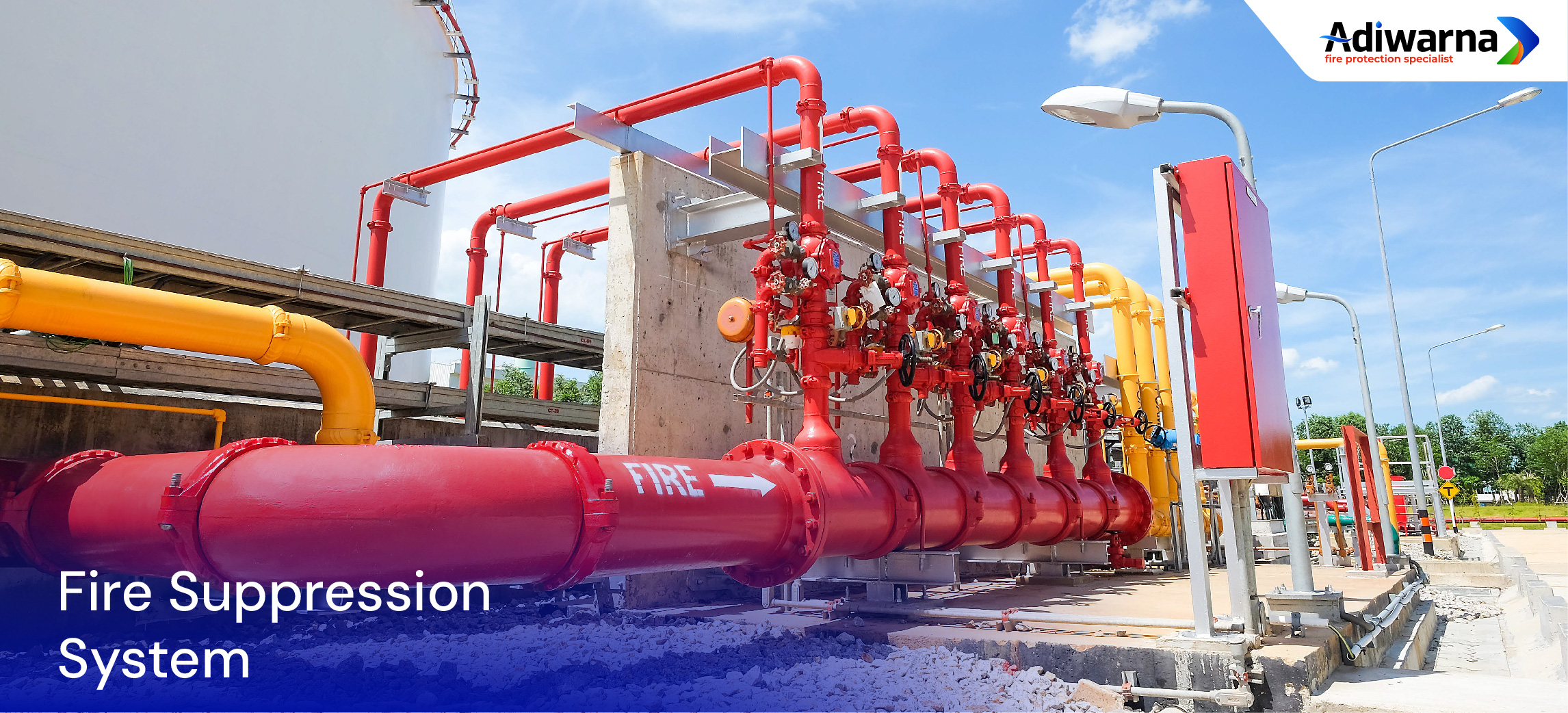Fire suppression system is a technology designed to tackle fires even before sparks can cause serious damage or even endanger lives. This technology is specifically designed using fire extinguishing agents in the form of water, foam or special chemical compounds.
Fire suppression systems have built-in components to detect fires as soon as possible. This component will first identify the presence of fire and smoke and then send a signal to the control center to activate the extinguishing system automatically.
The working principle is similar to sprinklers in that when the detection is active, the fire suppression system triggers an alarm as a warning and then takes action to extinguish the fire. Both fire suppression systems and sprinkler systems are activated when they detect heat or smoke. However, sprinklers generally use water as an agent while fire suppression systems generally use foam or chemical compounds so they are preferred in industrial environments. In addition to functioning automatically, these systems are equipped with manual controls as an alternative in case of system failure so that action can be taken by officers in emergency situations.
Fire suppression systems are designed to protect large areas or rooms such as server rooms, warehouses and industrial areas. This system has a large extinguishing capacity and can handle fires on a large scale.
Types Of Fire Suppression System
In general, fire suppression systems can be divided into several types. This is based on the type of extinguishing agent used and based on the coverage area. Among them are:
- Gas System
The gas system stores a fire extinguishing liquid that is pressurized with nitrogen. This liquid contains a chemical agent called FM200 which is condensed into liquid form. Because it does not use water, this type of fire protection is suitable for rooms with a lot of electrical equipment such as electrical panels or server rooms. - Wet Chemical Foam Systems
This system is specifically designed to extinguish fires in kitchen areas. It works by releasing a water-based chemical foam agent directly into a small localized area. It is usually placed under the stove lid and activated by a manual switch. - Water Mist Systems
This system is a viable fire-fighting solution for spaces that cannot be exposed to large amounts of water. It functions by producing much smaller droplets than conventional sprinkler systems. Its working principle is to produce a layer of vapor that stops the supply of oxygen to the fire thereby lowering the temperature of the affected area. - Foam Deluge Systems
One of the biggest challenges in firefighting is protecting areas that contain flammable liquids. This system is the most effective solution to control the spread of fire in these environments. Therefore, deluge foam systems are commonly installed in oil refineries, aircraft hangars, and industrial warehouses. Deluge foam systems use a mixture of foam and water to cool the surface of the exposed area. The consistency of the foam causes a thick blanket that stops the supply of oxygen to the fire and inhibits the release of flammable gases. - Pneumatic Heat Detection Tube
This system is the most compact and portable fire suppression system. It has two main components, a pipe and a valve. The pipe is installed around a potential source of fire; when it reaches a certain temperature, it releases the extinguishing agent directly onto the fire through the valve. Pneumatic Heat Detection Tube is generally used to tackle fires in small areas with little room for maneuver. Therefore, it is ideal for tackling fires in cupboards, drawers, boat areas and vehicles. As such it is not suitable as a large fire solution.
Thus several industrial sectors need to use Fire Suppression System to protect assets and production to avoid fires and can be handled as early as possible. PT Adiwarna Anugerah Abadi as a Fire Protection Specialist who has experience in fire protection in various industrial sectors and is certified with NFPA standards, is able to meet the needs of fire suppression systems for your protection. Contact us immediately through the contact us menu that we provide on our website page to get the best fire suppression system price quote just for you.

